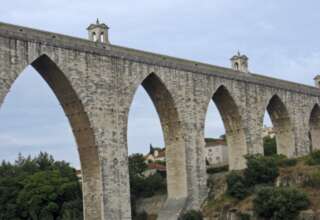
We find something similar operating in architecture and in the sciences. Newly constructed buildings offer examples of the postmodern emphasis on surfaces. While they provide interesting surfaces of varying texture, they also tend to be constructed without depth. They provide multiple surfaces that substitute for depth. Computerized goggles and gloves—used in virtual reality machines—make a Boeing engineer or executive think and feel as if he or she were actually flying a plane or hooking two molecules together. These machines convey the sense of depth, yet like holographic devices, they actually replicate only the surface and never the depth of the experience. We are tricked into believing that we have experienced depth or “virtual reality” when in fact we have seen only the surface. The 3-D glasses of the later stages of the modern era never really captured our imagination. However, the virtual reality of computerized gloves, holographic images, a replicated main street in Disneyland, or, for that matter, a new corporate emphasis on “the core values of our organization” lure us into belief and eventually lead us to a state of confusion about what is real and what is phony.
The American Variety Show
While Todd Gitlin believes that postmodern fragmentation is global in scope and character, he also believes that it is particularly prevalent in the United States. He writes of “American eclecticism” and notes a lack of distinctive American culture. A federation of cultures (the American “variety show”) has emerged in the United States. It is bolstered by a sense that “anything goes.” Postmodern terms and concepts are defined by lists of examples rather than by any formal definition.
According to Gitlin the postmodern world in the United States during the 1990s consisted of shopping malls, suburban strips, Disneyland, MTV, David Letterman, Hyatt Regency hotels, Doctorow, Foucault, Lacan, Derrida, Baudrillard, and remote-control-equipped viewers “grazing” around the television dial. What would the list look like today? Some of the same items but many new ones – and ones that are even more diverse in character. What are the new Santa Clauses nailed to a cross or the new intermixing of cultures – what Richard Rodriguez (2003) has called the “browning” of culture? The list might not even stay in date for more than a few hours or days.







